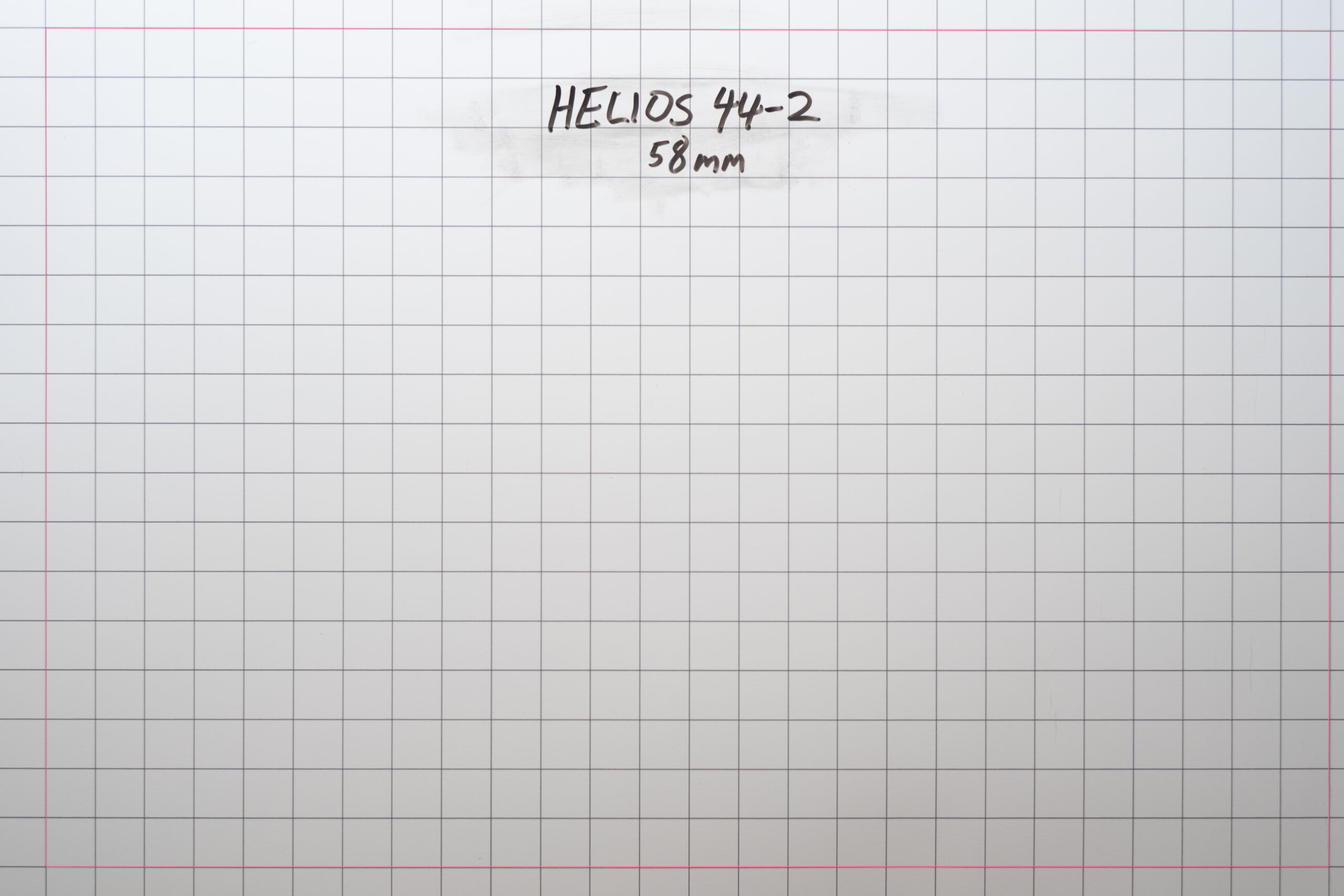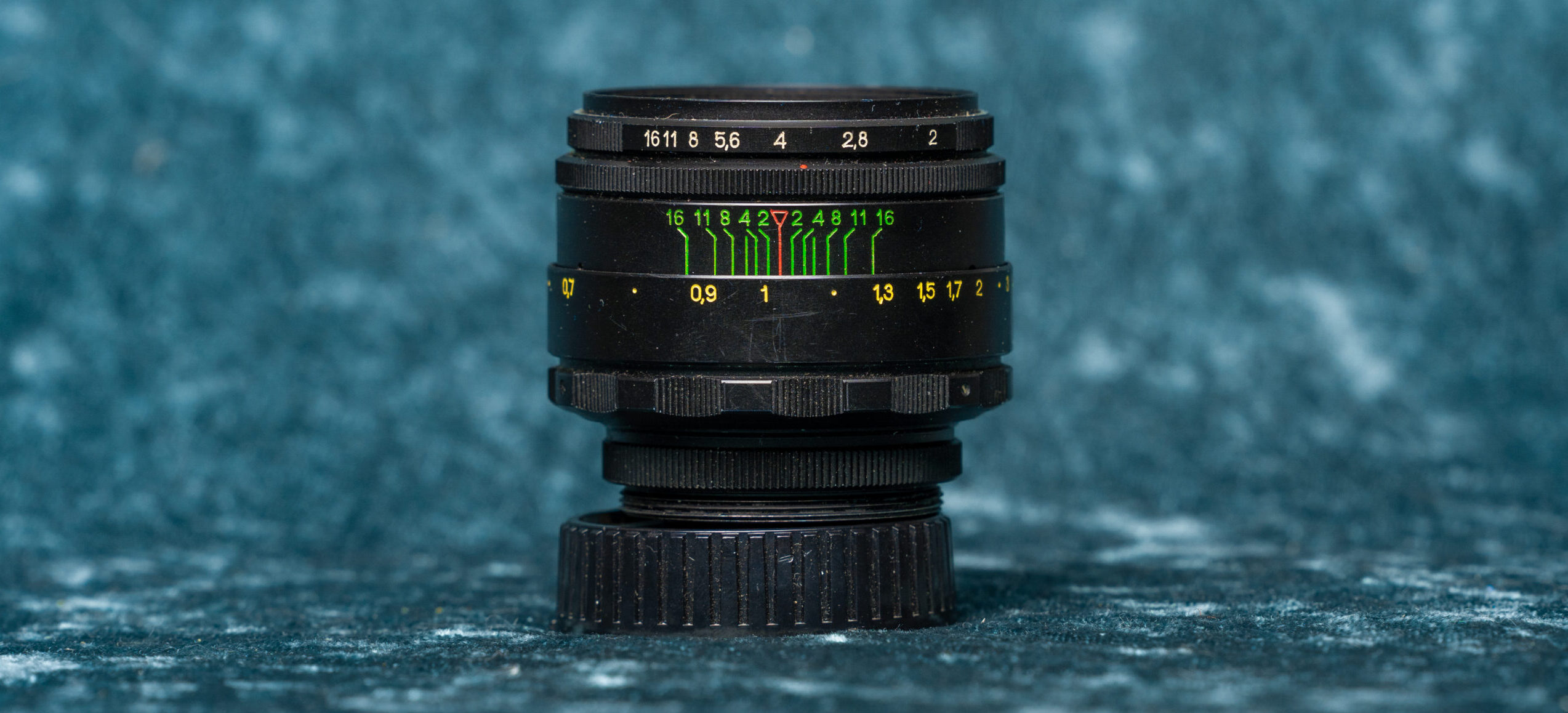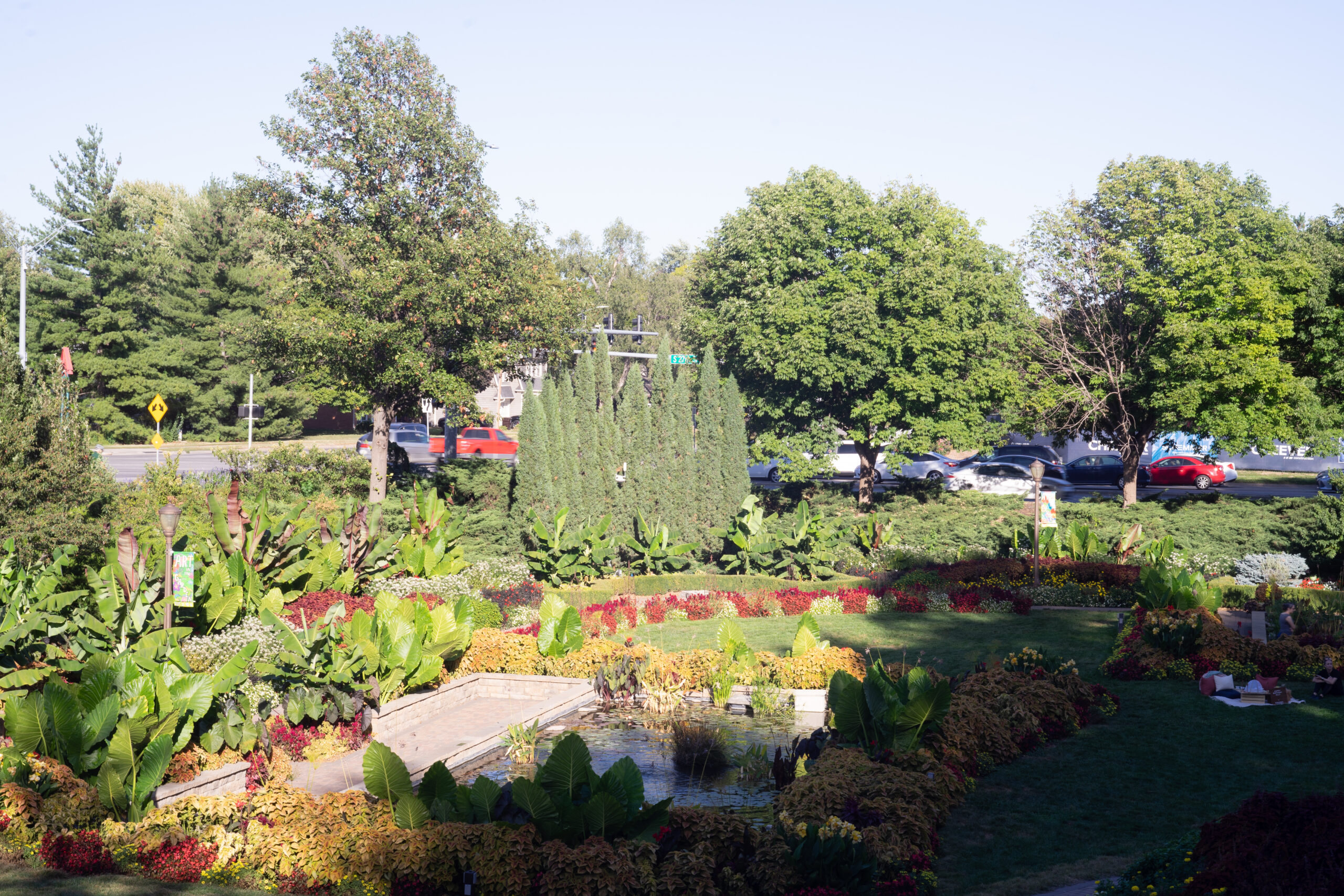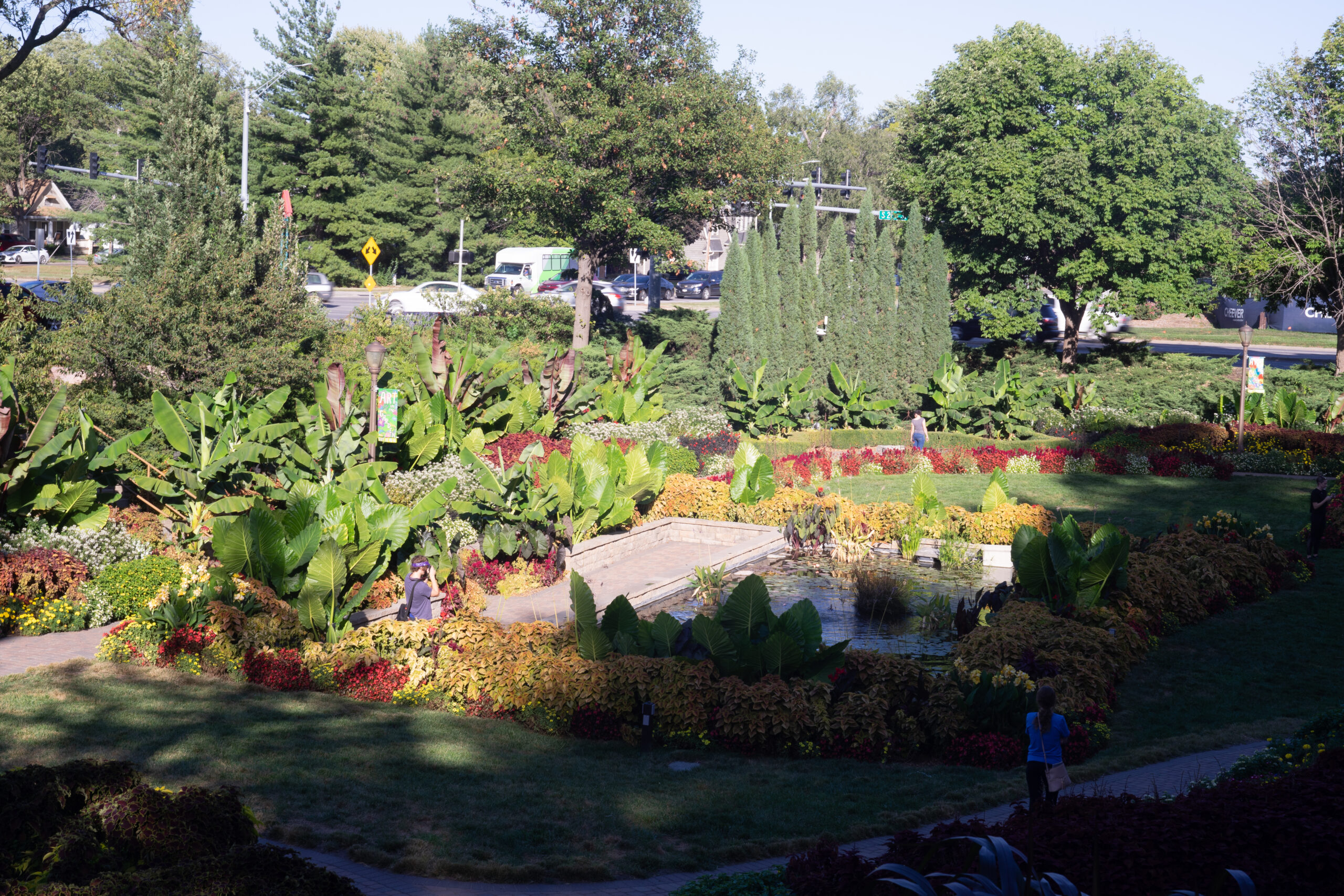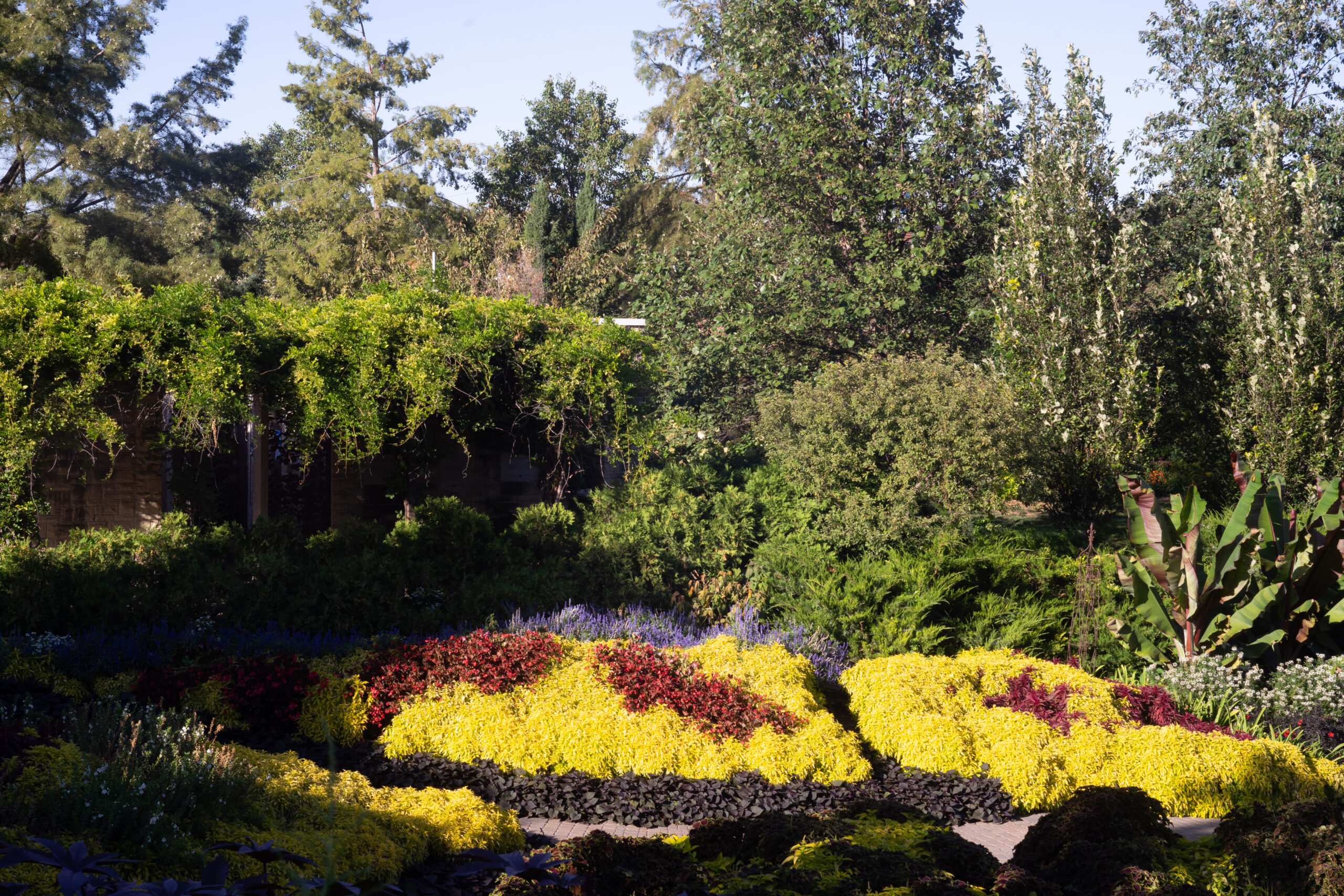History
The Helios 44-2 is actually the first vintage manual-focus lens I ever bought. It’s a 58mm f2 prime lens. It was made in Russia from 1950’s as a copy of a German Carl Zeiss lens. You might think the 2 in the 44-2 referred to the maximum aperture of f2, but it really means it’s version 2 of the lens. The Helios 44 (which didn’t have a dash 1), was similar but had an M39 mount instead of M42. There was also at least an 44-3 (which added an anti-glare Multi-coating layer) as well a 44M-4 (I have no idea what the upgrade was there).
Before Wold War II, the Soviet Union imported a lot of optics from other countries. Unfortunately, most of those countries were Axis countries and when Germany invaded Russia, the Soviet Union found itself in need of a new source of optics for their military. So they created Krasnogorsk Mechanical Works or KMZ in 1942 and started cranking out their own lenses. A couple of years later, the Soviet army occupied East Germany where the Zeiss factory was and they stole the formula for the Zeiss Biotar lens. KMZ then began manufacturing their own copies of this lens which became the Helios 44.
The lens continued to be produced through the 1990s, undergoing several revisions along the way. There were also 50mm and 85mm Helios lenses, but you don’t hear as much about those. The thing that makes this lens so popular is the swirly bokeh effect in the background as shown in the image below.

Specifications
The Helios 44-2 has an unusual configuration – the aperture ring is at the end of the lens instead of closest to the body like most lenses have. It also has an interesting, double aperture ring. There is an outer ring goes from f2 to f16 in one-stop increments and an inner ring that operates smoothly with no clicks between f2 and whatever the outer ring is set to. This allows you to set your desired f-stop with the outer ring and then use the inner ring to temporarily change to f2 to make it easier to focus and then switch back to the desired aperture.
The aperture itself consists of 8 blades.
The focus ring is nice and smooth and has a nice, long throw. I would estimate it’s about 310 degrees from the minimum focus distance of .5m to infinity. The longer the throw, the easier it is to fine tune the focus.
The lens weighs just 7.7oz (218g). And it accepts a 49mm filter on the front.
Focus Tests
This is a manual focus lens, so it takes practice focus well. However, with a focus ring that goes about 270 degrees, it’s easier to tune than some lenses that only have about a quarter of a turn on the focus ring.
Here is the focus chart I use. I printed out 5 of these on the highest quality printer that Staples had and glued them to a piece of poster board and taped it to a movable wall in my studio. It’s not pretty, but it also didn’t cost hundreds of dollars. You may notice a bit of vignetting, but that’s my lighting. I positioned one softbox above and to the left of my camera, so that corner is a bit brighter and the lower-right corner is a bit darker. Note how blurry the corners are compared to the center.
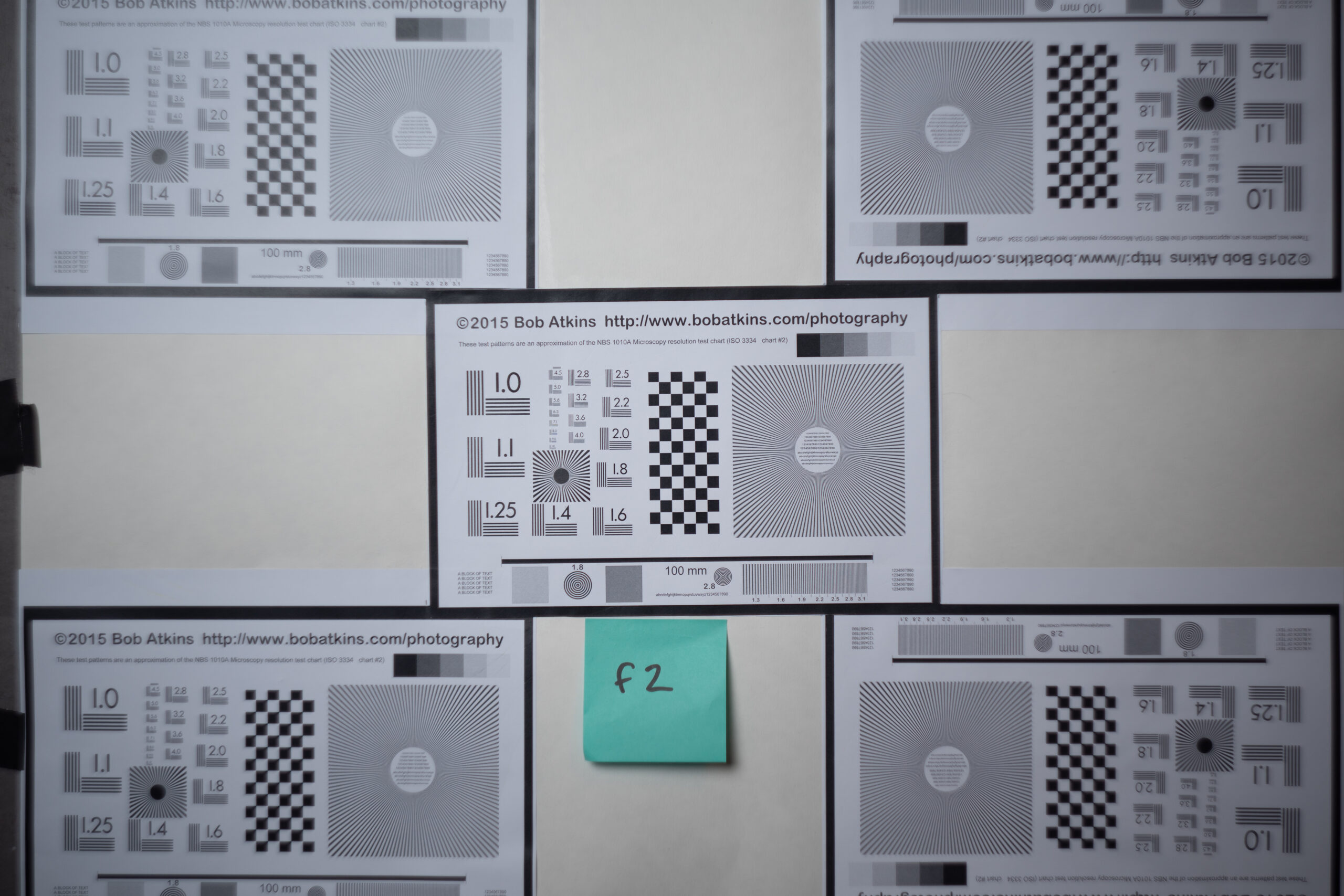
Here’s the center of the chart at 200% zoom at f2.0. The focus is pretty sharp (as close as I could get it manually) and I don’t see any chromatic aberration.
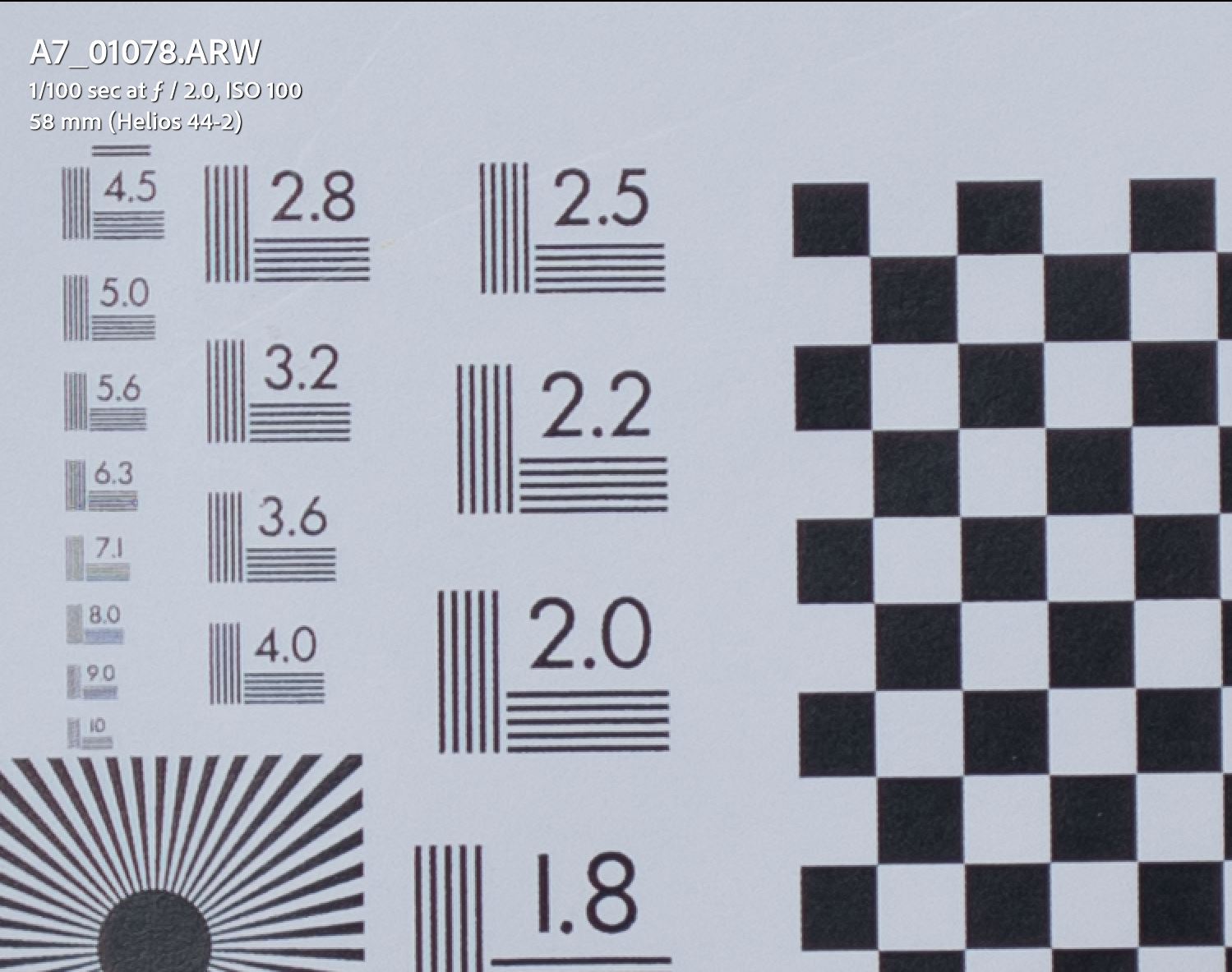
Here’s the center again at 200% zoom but f5.6. Again, this is pretty good. Contrast is a little bit better.
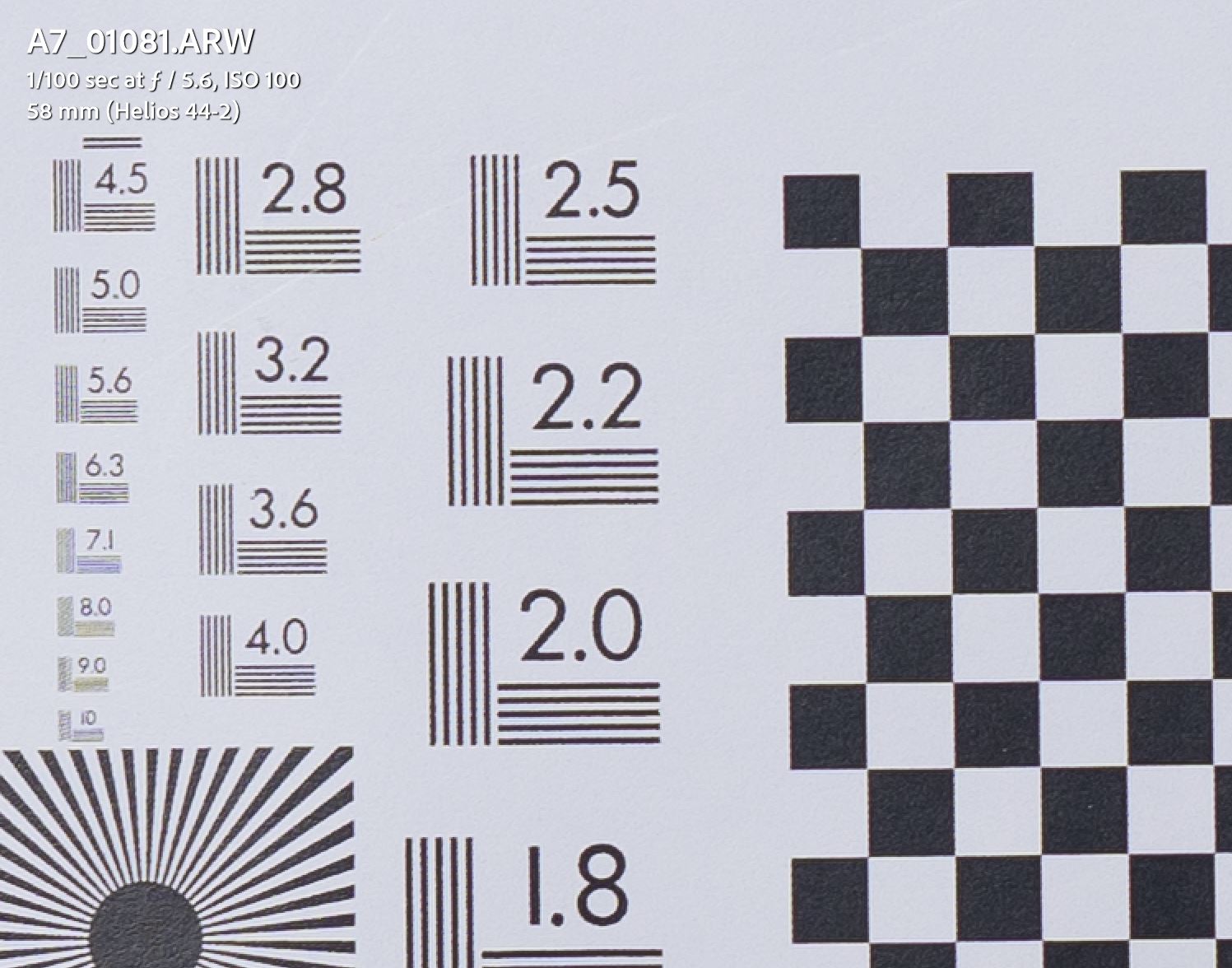
Here’s the upper left corner at f2. Note how soft the focus is and the ghosting around the dark areas. The contrast is pretty bad in the corners too. The whites are a bit darker and the blacks are a bit lighter. But if you’re using this lens for the artistic effect of its bokeh at wide-open, you probably don’t care if the corners are out-of-focus, as long as the subject in the center is.
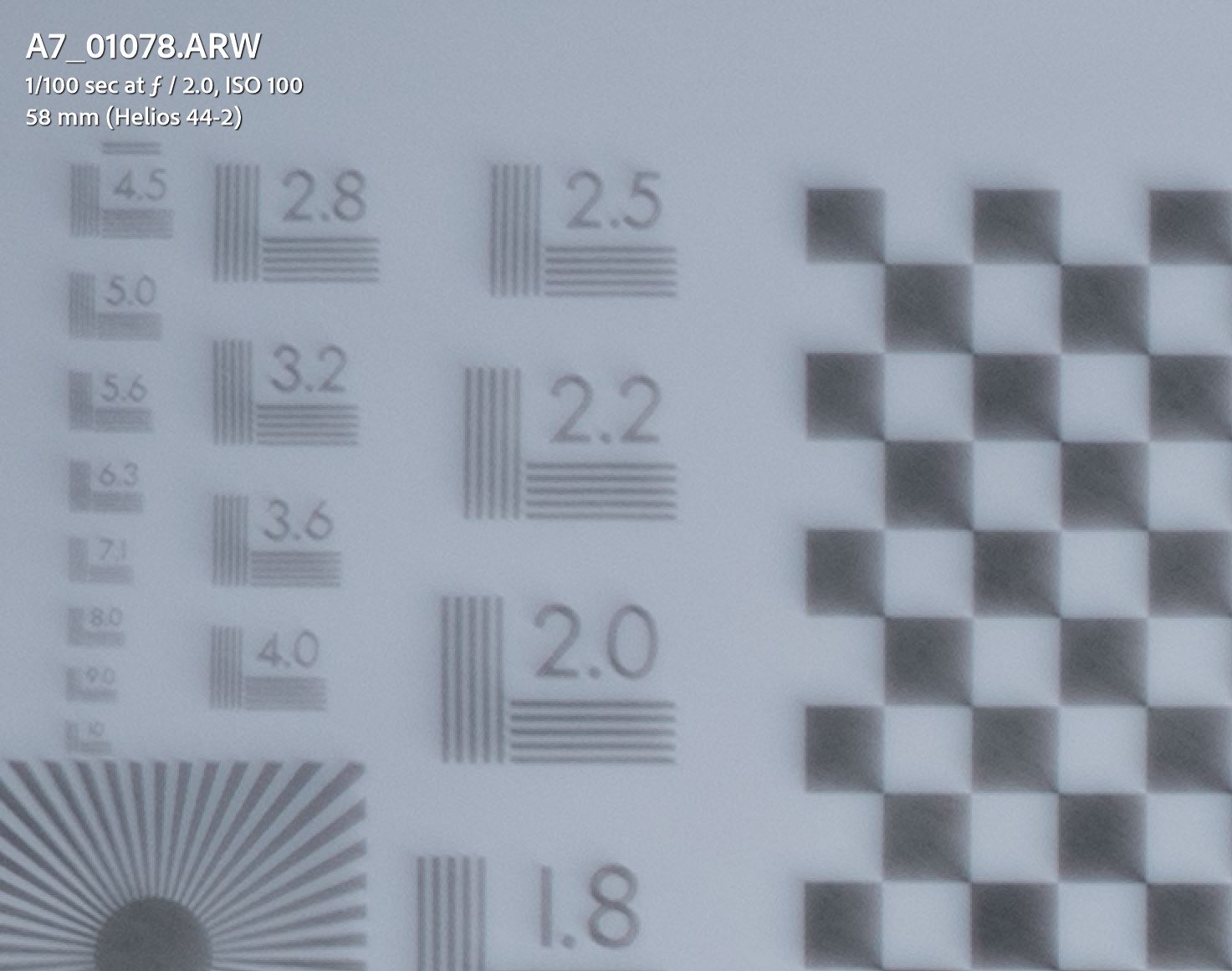
Here’s the upper-left corner at f5.6 with 200% zoom. Focus is much better than at f2. The whites are a bit whiter, matching the center image at the same f-stop. But the blacks are lighter
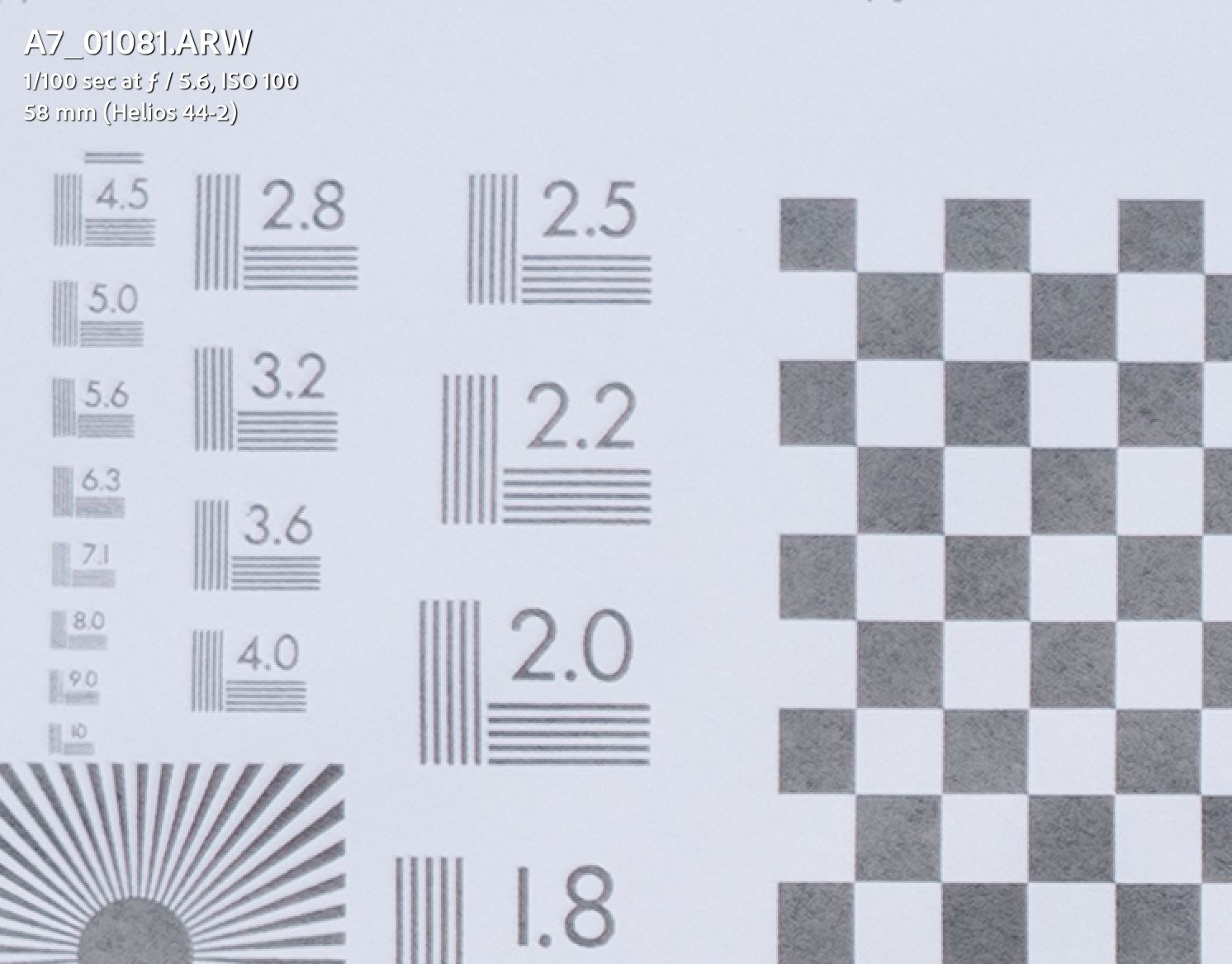
Distortion Test
This is the distortion test chart I use. It’s is a 2′ by 3′ dry-erase vinyl mat with a 1 inch grid printed on designed for playing D&D or other role playing games. You can get something like this Amazon for about $25. The red lines were added in using photoshop and show what a true straight line would be. There’s hardly any distortion at all.
